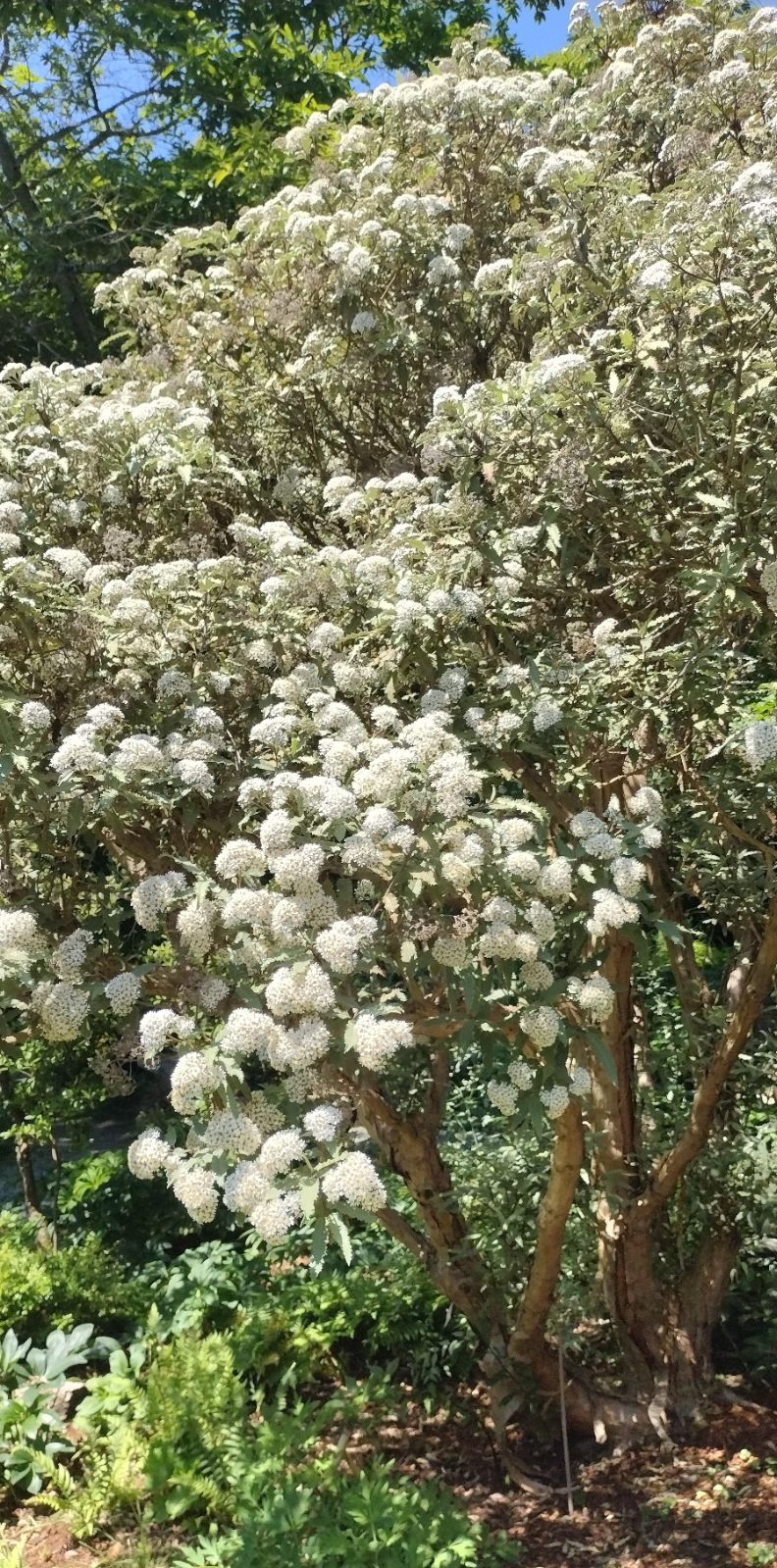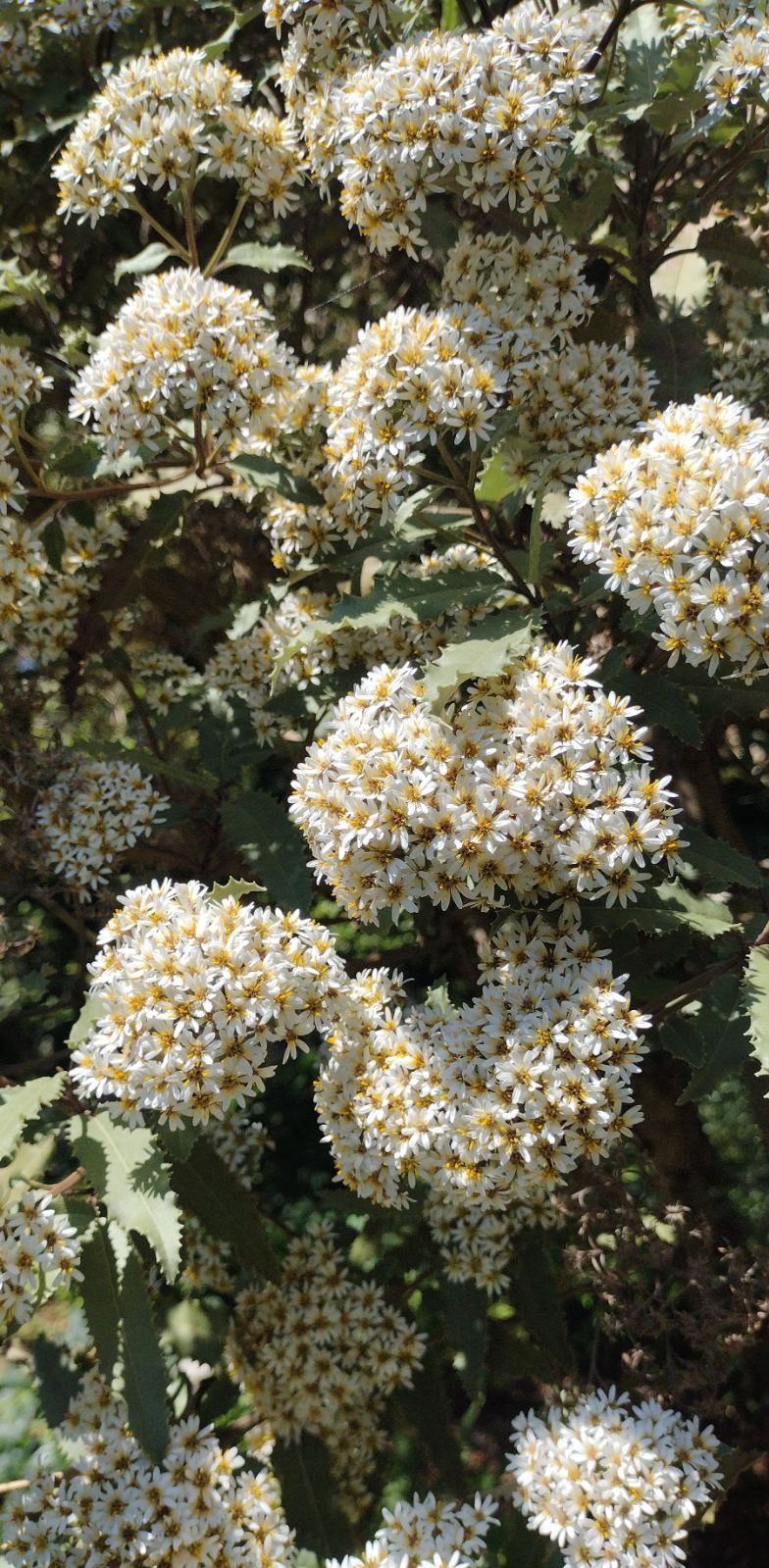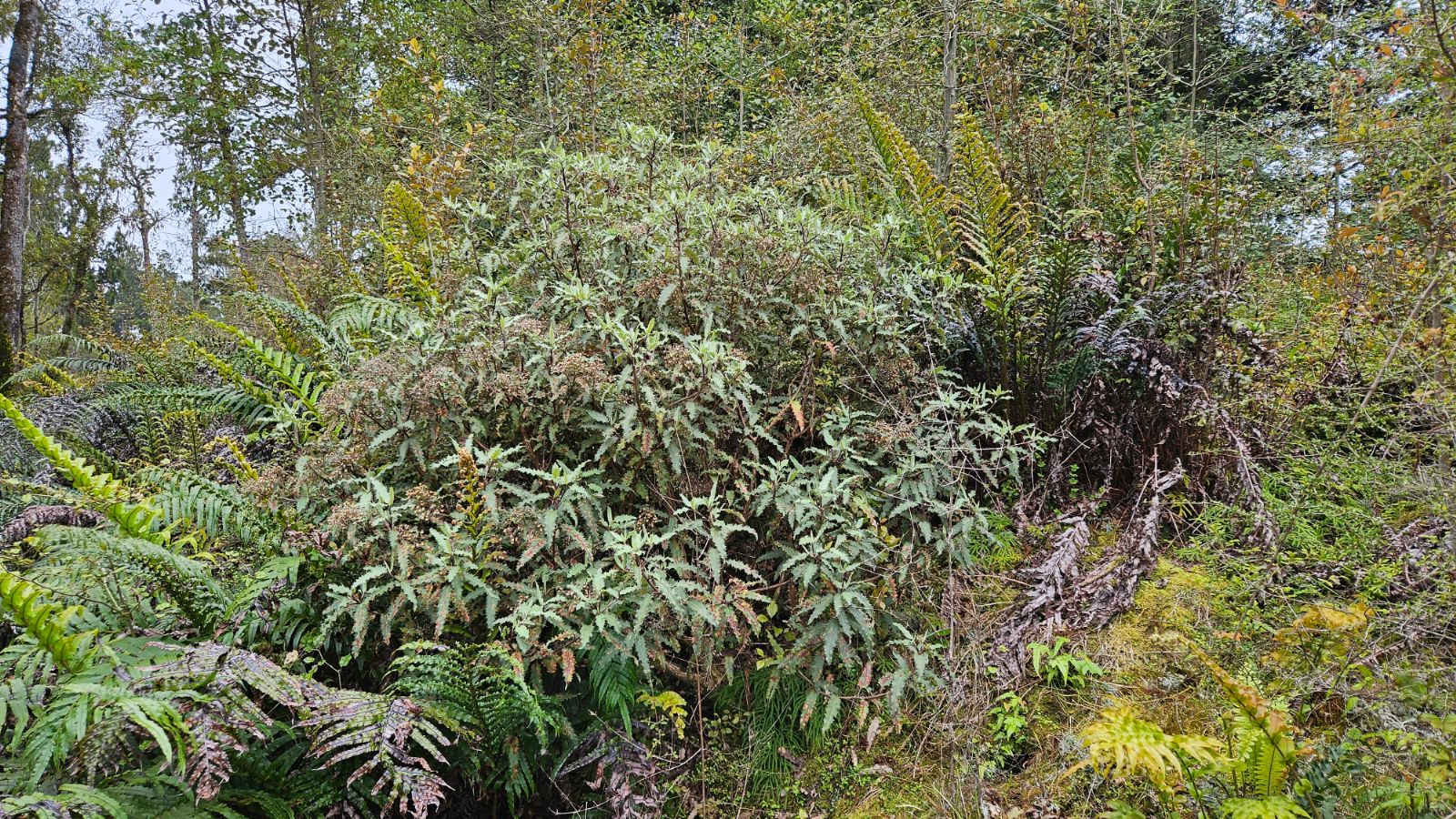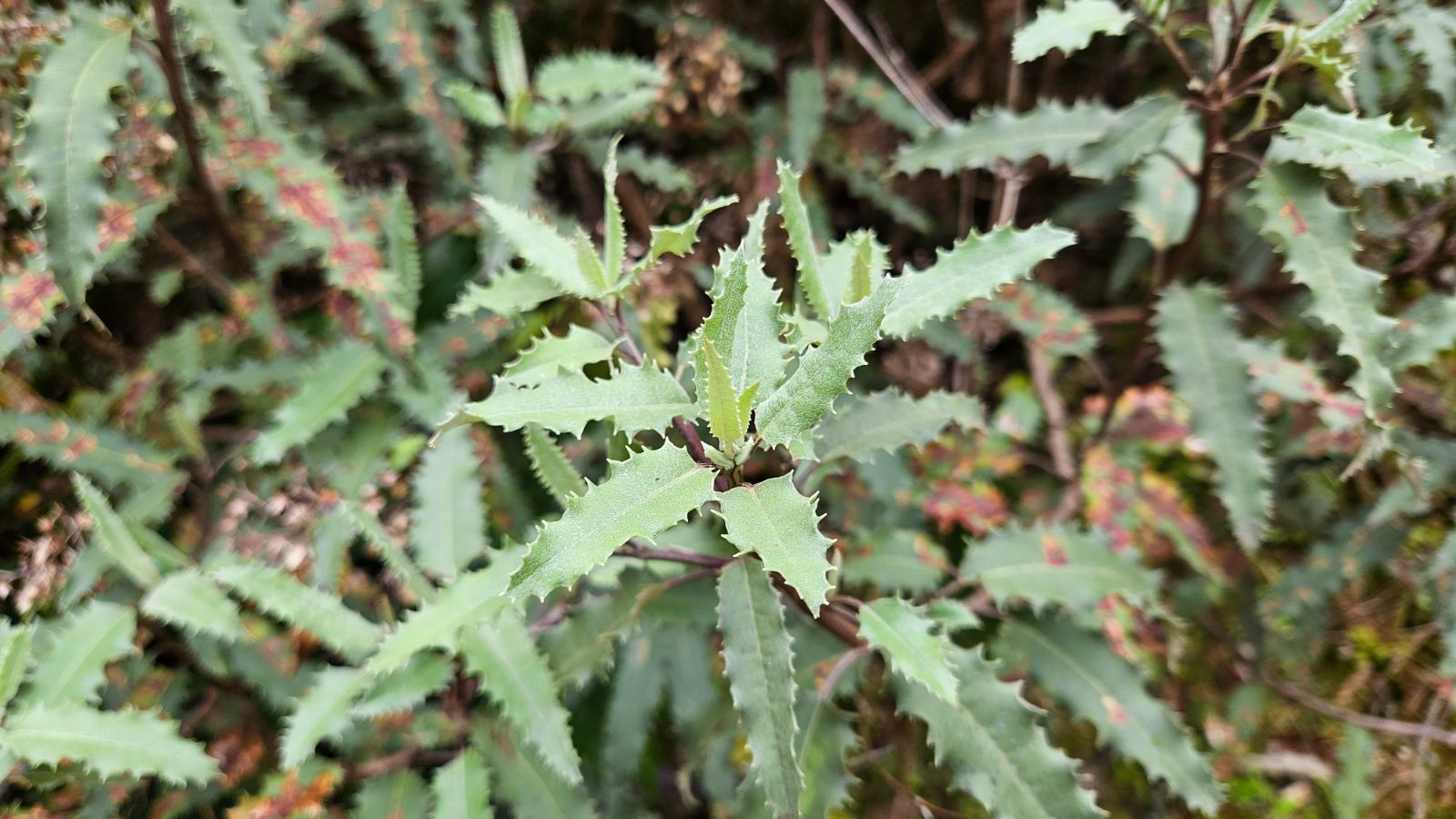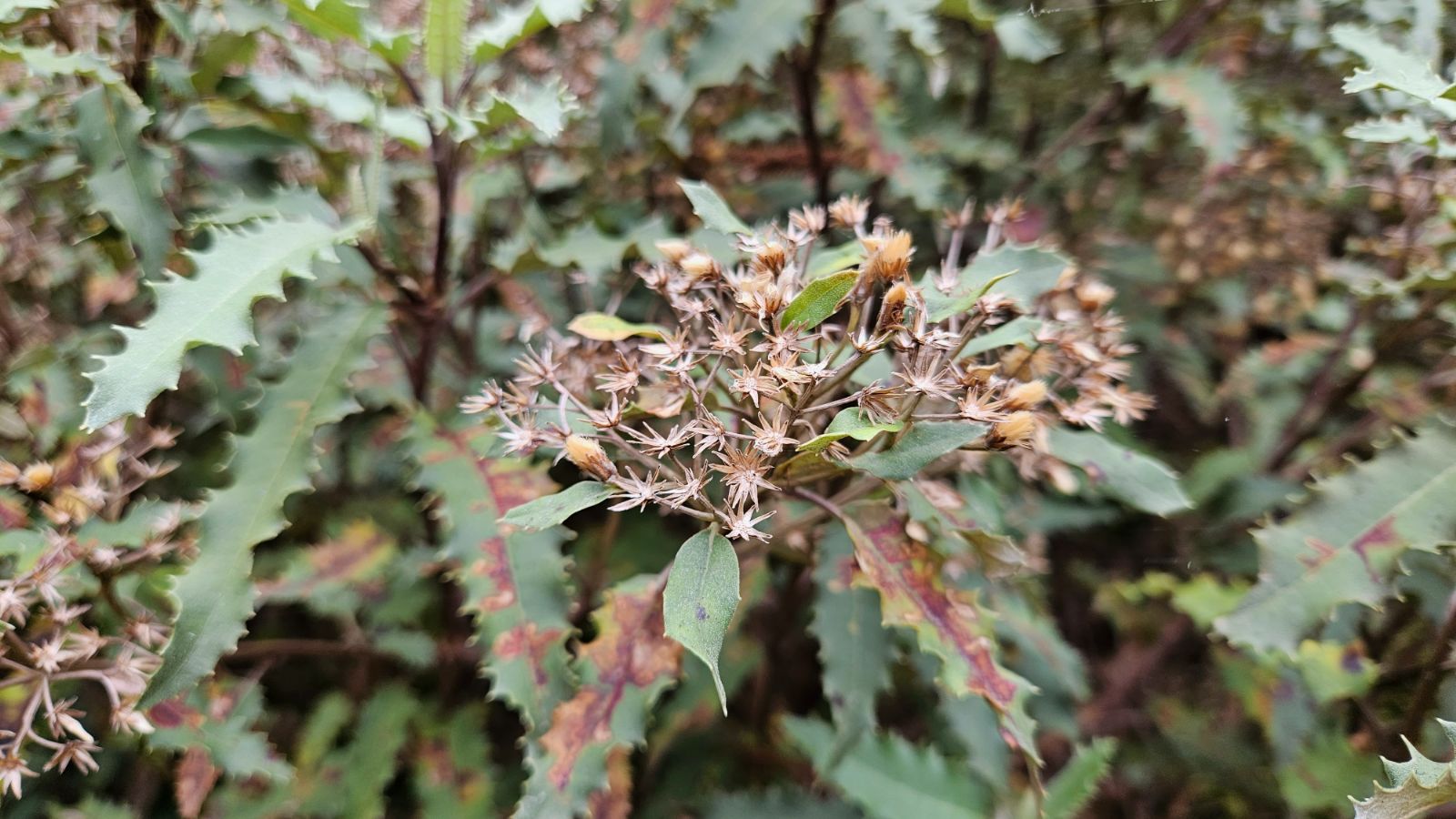Olearia ilicifolia
Credits
Article from Bean's Trees and Shrubs Hardy in the British Isles
Recommended citation
'Olearia ilicifolia' from the website Trees and Shrubs Online (treesandshrubsonline.
Genus
Synonyms
- Eurybia dentata var. linearifolia Hook. f.
Other taxa in genus
- Olearia arborescens
- Olearia argophylla
- Olearia avicenniifolia
- Olearia chathamica
- Olearia cheesemanii
- Olearia colensoi
- Olearia erubescens
- Olearia frostii
- Olearia furfuracea
- Olearia × haastii
- Olearia ilicifolia × O. moschata
- Olearia insignis
- Olearia lacunosa
- Olearia ledifolia
- Olearia macrodonta
- Olearia × mollis
- Olearia moschata
- Olearia nummulariifolia
- Olearia odorata
- Olearia paniculata
- Olearia phlogopappa
- Olearia ramulosa
- Olearia rotundifolia
- Olearia × scilloniensis
- Olearia semidentata
- Olearia solandri
- Olearia traversii
- Olearia virgata
An evergreen bush of spreading habit up to 10 ft or more high; young shoots rather downy. Leaves alternate, hard and leathery, linear-oblong to lanceolate, pointed, rounded or truncate at the base, margins conspicuously wavy and sharply and coarsely toothed, glabrous and green at maturity above, clothed beneath with a close whitish felt, 2 to 4 in. long, 1⁄2 to 1 in. wide; stalk 1⁄2 to 3⁄4 in. long. Flower-heads fragrant, produced during June in branched, rounded corymbs 2 to 4 in. wide from the end of the previous year’s growths on a main-stalk 3 to 6 in. long. Each flower-head is daisy-like, about 1⁄2 in. wide, with ten or more white ray-florets. Bot. Mag., n.s., t. 654.
Native of New Zealand on both North and South Islands extending to 4,000 ft altitude. It is closely related to O. macrodonta and is somewhat similar in general appearance. Both have the same musk-like odour. The leaves of O. ilicifolia are more oblong in shape, usually narrower, more wavy at the margin, and the veins stand out from the midrib at right angles (pointing forward in O. macrodonta). The whole plant in this country is smaller and less vigorous.
It is about as hardy as O. macrodonta or even hardier, and has thrived for many years outdoors at Wakehurst Place in Sussex. It received an Award of Merit when exhibited from there by the Director of Kew Gardens on July 11, 1972.

